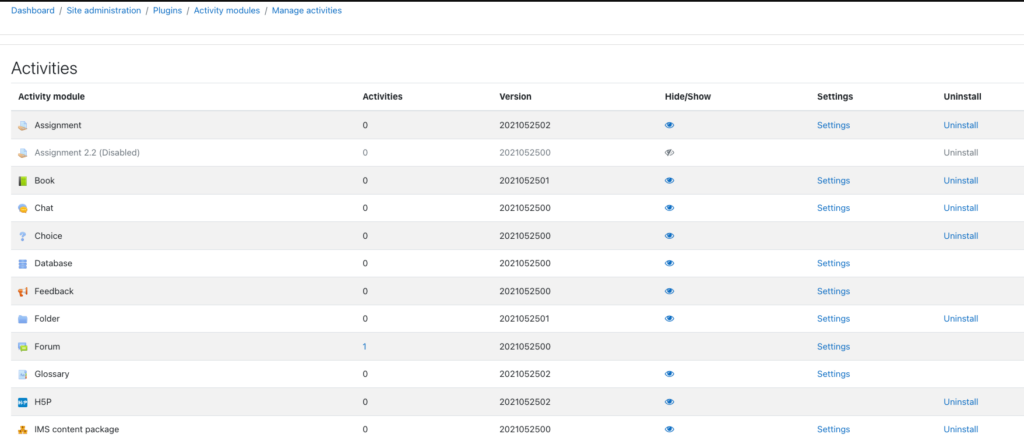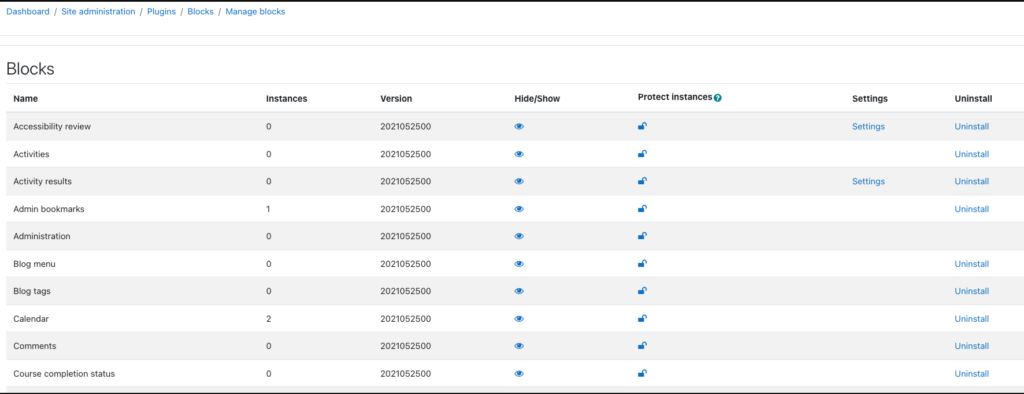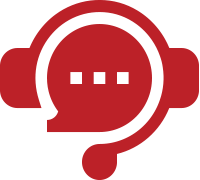Some tips for Moodle administrators and the dashboard views you must have.
Auditing your Moodle site regularly is a must. When was the last time you did your audit?
Some of the questions to ask during your Moodle site audit include:
- What are the features and activities you never use? Why? Should you be using them?
- What are the features and activities that we do use at all times?
- When was the last time you collected feedback from your team – whether they experience any issues when creating courses, quizes, running reports, and so on?
- What plugins do we have? Do they still work for us? Are there better solutions out there that can replace some of the old plugins?
Performing a gap analysis and applying the start, stop, change, continue (SSCC) model to the way you use Moodle and its various features can help you make the most of your Moodle site.
Where do you start?
Your Moodle admin dashboard is a great place for your analysis. The areas you want to explore include:
Your Moodle Notifications Page

Your Additional Moodle Plugins Page

Your Moodle Activities Overview Page

Your Moodle Blocks Overview Page

to name a few.
Moodle Site Administrators are in the most powerful position when it comes to analysis and management of site upgrades – running reports, checking for available integrations, installing new plugins and asking questions about the features your organisation should add or get rid of in order to optimise your Moodle LMS performance.
Remember, if you are not using certain plugins but they are installed on your site, those may be a security liability if they haven’t been maintained. The unused plugins can also add costs during your next site upgrade. As an organisation you need to be aware of what is installed in your LMS.
When consulting with new clients, we are often told that their Moodle site administrators had never seen these views, as exemplified above, on their admin site and therefore could not gather or analyse such important information as to how their site is being used.
Why? Because in many cases, Moodle providers do not offer full access to Moodle clients, including site administrators, in fear that accidents may happen and some things can be ‘broken’ as administrators play with different features and views in the background.
These admin views / pages however, are critical pieces of the puzzle you need to be able to make good, informed decisions which can result in various efficiency and effectiveness improvements for your LMS.
Remember, Moodle features are highly customisable and can integrate with over 20,000 different applications. Your needs however are unique and your organisation’s needs are constantly changing. So, keeping an eye on things at all times is critical.
While your e-learning consultant / Moodle provider can help guide you during the initial implementation stages, for the ongoing monitoring of how your organisation uses your site (and all its features), as a site administrator, you are still in the best position to flag anything that seems interesting or questionable, and initiate conversations with your team and/or your consultants to implement changes as required.
Good news is:
Catalyst IT Australia provides their clients with a transparent, ‘fully open’ access to their Moodle sites.
Yes, accidents happen and sometimes our clients need us to fix some things they’ve ‘broken’. That’s no problem at all, as we are always here to help.
The main thing is that our clients and their site administrators are well informed about how their site is being used and can identify room for improvements. More importantly, their users appreciate that too as they benefit from ongoing improvement to their experience.
Want more e-learning tips?
Speak with one of our e-learning consultants today.



